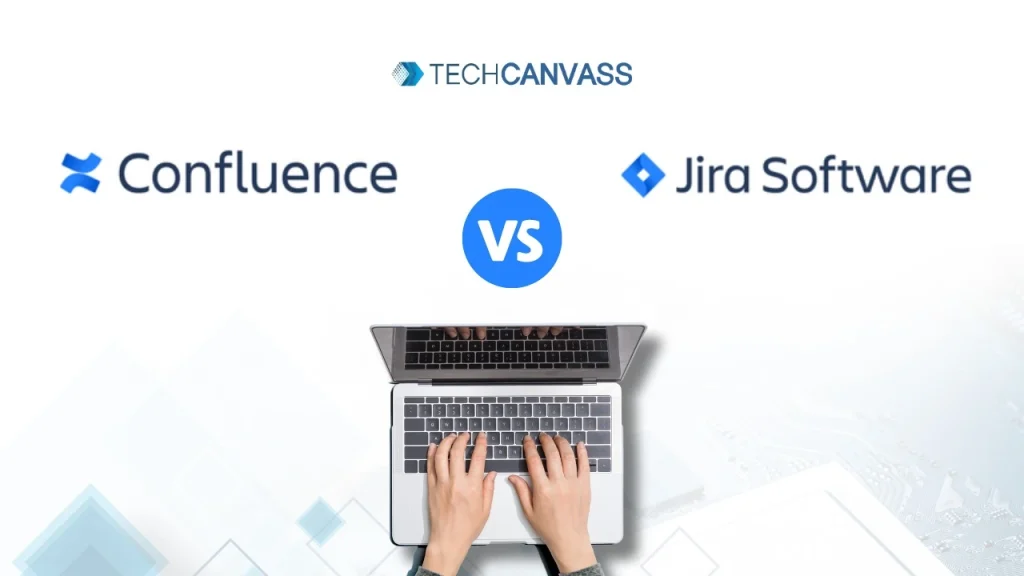Confluence and Jira are like peanut butter and jelly. Each is a star on its own, but together, they create a constellation of greatness. Confluence is a wiki collaboration tool that helps teams create, organize, and share documentation. On the other hand, Jira is a project management and issue-tracking tool that helps teams track and manage work.
In this blog, our main focus will be on the key differences between Confluence and Jira. You may choose the tool that is best for your team using this comparison. Additionally, we will deeply explore each tool as well as its advantages and disadvantages.
Confluence vs Jira: Key differences at a glance
These are some of the key differences between Confluence and Jira;
|
Areas |
Confluence |
Jira |
| Used For | Confluence serves as a tool for collaboration using wikis. It’s used to make and exchange documents, pages, and knowledge bases | Jira is a tool for managing projects and tracking issues. It helps keep tabs on project advancement and bug fixes |
| Used By |
|
|
| Primary focus | Confluence is best suited for teams that need to collaborate on documentation, knowledge bases, and other long-form content | Jira is best suited for teams that need to track the progress of projects and bugs |
| Calendar | Confluence does not have a built-in calendar, but there are third-party integrations that can be used to add one. One popular integration is called Team Calendar | Jira has a built-in calendar that can be used to track deadlines and milestones |
| Features | Confluence offers a range of features for collaboration, including wiki pages, blogs, forums, and document management | Jira offers a range of features for project management, including issue tracking, task lists, and schedules |
What is Confluence?
Atlassian Confluence is a web-based collaboration software. Teams may create, distribute, and update documents using this wiki-style documentation platform in one spot. It is a Java-based application that was created using many open standards and libraries. Teams of different sizes use Confluence to record processes, share expertise, and work together on projects.
Confluence is a wiki-style tool that enables you to create and organize documents. To encourage discussion, you can link pages together and add comments. Spaces, which act as storage units for pages about a given subject, are used to organize documents. Confluence includes templates and macros to make document creation quick and simple. Version control, commenting, and real-time editing are additional tools you can use to collaborate with others on documents. Confluence can be integrated with other Atlassian products to aid in process documentation, issue tracking, and software development.
Key Features:
- Template: Confluence offers a variety of templates that can be used to create different kinds of documents, like meeting records, marketing materials, and technical information.
- Widgets: Calendars, charts, and photos are examples of Confluence widgets.
- Discussions: Discussions can be added to Confluence pages, which is a wonderful method to obtain feedback from team members.
- Spaces: Confluence spaces allow you to categorize your pages, such as projects, teams, or departments.
What is Jira?
Atlassian created the project management tool Jira. Teams can track and organize their work using Jira. It provides capabilities including reporting, process automation, and issue tracking. Jira may be used for any kind of project, although software development teams seem to favour it the most.
Jira can assist teams in improving their customization, adaptability, efficiency, and teamwork. This tool is beneficial for teams of all sizes. For instance, a software development team could utilize Jira to track problems and features, while a marketing team could use it to monitor campaigns and projects.
Key Features:
- Issue tracking: Jira can track your work and help you stay organized.
- Workflow automation: Jira can automate your work, so you can save time and focus on the important stuff.
- Reporting: Jira can generate reports, so you can track your progress and make informed decisions.
- Integrations: Jira can integrate with other tools, so you can streamline your workflows.
- Wiki: Jira has a built-in wiki, so you can store documentation and share information with team members.
- Dashboards: Jira can create dashboards, so you can track key metrics and keep teams informed of their progress.
- Customization: Jira can be easily adjusted to match exactly what you require.
Comparison between the advantages of Confluence and Jira
In this table of comparison, we will explore the top 5 advantages of both Confluence and Jira;
| Advantages of Confluence | Advantages of Jira |
|---|---|
| Confluence is the one-stop shop for all of your team’s documentation, allowing everyone to discover what they need. | Jira helps teams track their work and identify potential risks and bottlenecks |
| Confluence lets several individuals work on documents at the same time, allowing you to get input rapidly. | Jira can automate workflows and provide reporting capabilities, which can help teams save time and improve efficiency. |
| Confluence records all changes to your papers so you can always revert to a previous version. | Jira’s collaboration features make it easy for teams to work together on projects. |
| Confluence interacts with other programs you use, making it simple to share information. | Jira can grow with teams of all sizes. |
| Confluence can be scaled to match the demands of your team, no matter how large or small. | It’s easy to adjust and personalize Jira to match team requirements. |
What are the disadvantages of Confluence and JIRA?
While Confluence and JIRA offer numerous advantages, it’s important to also consider their limitations:
- Cost Considerations: Confluence and JIRA are considered premium tools, which may lead to higher associated costs
- Complex Functionality: The wide range of functions within Confluence and JIRA can be overwhelming for beginners, potentially requiring a learning curve
- Limited Flexibility: In comparison to some other collaboration tools, Confluence and JIRA may not offer the same level of flexibility in adapting to unique workflows
- Search Precision: Within Confluence and JIRA, the search tool may occasionally yield inaccurate results, particularly when you’re unsure about the exact name of a page or document
- Performance Challenges: Confluence and JIRA may experience performance issues, particularly when handling extensive data or large documents, resulting in slower and less responsive user experiences.
Conclusion
Jira and Confluence both allow teams to collaborate on projects. However, choosing the appropriate instrument is important since every tool has advantages and disadvantages. Jira is excellent if you want to monitor bugs and project progress. if you’re looking to work together on documents and share knowledge, Confluence is a good choice.
For more information about Jira or Confluence, you can explore the courses provided by TechCanvass. TechCanvass offers a variety of courses on both Jira and Confluence, taught by experienced instructors.
The Jira course includes course lectures, chapter-wise quizzes, trainer presentations, reference library, case study, proficient certificate, learn at your own pace, real-life case study, unlimited extensions to LMS Portal, and course certification.
The Confluence course includes course lectures, chapter-wise quizzes, trainer presentations, reference library, course assignments, 1-year course access (extendable), reference library, and course assignments & more.





